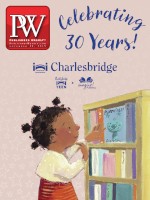Dorman’s The Princess and the Prophet (Beacon, Mar.), details the life of entertainer and spiritual leader John Walter Brister, better known as Nobel Drew Ali, the founder of the Moorish Science Temple of America.
How did you come to discover the story of John Walter Brister?
I read lots of histories of black Muslims and whenever I saw the biography of Noble Drew Ali and his alleged birthplace in North Carolina, I wondered about the fact there never was a footnote. As a trained historian, I care about sources, so it was curious that such an important fact wouldn’t have any documentation. A story in the Associated Negro Press said that before becoming Noble Drew Ali, he had accompanied a Hindu Fakir in a circus; just on that one sentence alone, I decided to go to circus archives. I went to Bariboo, Wis., to the Circus World Museum, where I started looking for the background of Orientalism through Arabs in the circus, and that’s how I found John Walter Brister in 1989 and then 1899 in the Pawnee Bill Wild West show.
You write that in the Gilded Age, Americans were captivated with the Islamic Orient. Why do you think that is?
I think that people were interested because of literature, specifically The Arabian Nights. Arabic and African-Americans who appeared as acrobats were very much playing on audiences’ prior familiarity with those tropes through The Arabian Nights.
Does the favorable reaction to such exotic yet fantastical displays suggest people are more influenced by entertainment than education?
Absolutely, yeah, and that’s something that I think is so powerful about studying popular culture. I think it helps to access how people put together their worldviews. We’re constantly learning things almost the way something is absorbed through the blood-brain barrier. It’s not necessarily that people learn about religion in religious settings or institutions; we’re also learning about religion and, by extension, all of culture all the time. I was asking: what does it mean to be a Muslim in 1925? Rather than taking a genealogical approach to connecting 20th century Muslims of African descent to 19th-century Muslims of African descent, I wanted to explore what it was like to be a Muslim when Noble Drew Ali starts the Moorish Science Temple.
How do you hope readers view Noble Drew Ali’s accomplishments?
I began this project with a tremendous amount of respect for what Noble Drew Ali accomplished; I finished the project with an even a greater respect for his achievements. Other people tried to start Islam among African Americans in the 20th century, building on the legacy of the many enslaved Muslims in this country. They failed. What he did was really remarkable. I think it can help readers to re-evaluate their own cultural formation and to appreciate all the ways in which we are constantly patching our cultures together, our worldviews together, through these processes of collage.



 Volume 266
Issue 47
11/25/2019
Volume 266
Issue 47
11/25/2019





